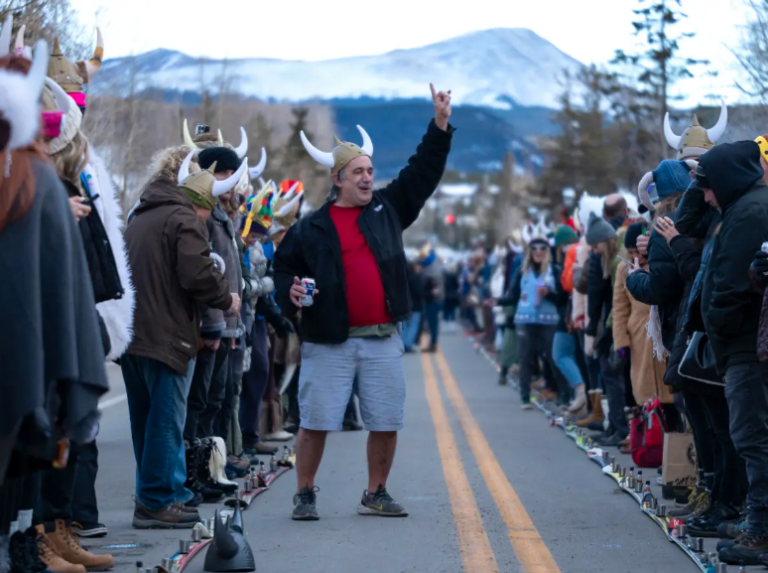 Uluru Fest fans took part in the world’s largest shotski on Main Street in Breckenridge on Dec. 7, 2023. The record for the longest shotski in the world was broken on Thursday with 1,377 people, breaking the previous record held in Park City.
Uluru Fest fans took part in the world’s largest shotski on Main Street in Breckenridge on Dec. 7, 2023. The record for the longest shotski in the world was broken on Thursday with 1,377 people, breaking the previous record held in Park City.
Hugh Carey/The Colorado Sun
The mountain region had been undergoing a slow and steady cultural and economic transformation that accelerated with the end of the pandemic as new residents arrived, tourists flocked in, real estate prices soared and local workers competed for housing.
A new survey of 4,000 people in Eagle, Grand, Pitkin, Routt and Summit counties quantifies a community in flux as full-time residents (both renters and homeowners), part-time residents, public employees and second-home owners adapt to a resort economy that is moving away from a sole reliance on tourists.
The regional survey, commissioned by the Northwest Colorado Council of Governments and the Colorado Ski Areas Association and conducted by a group of veteran tourism economic researchers known as the Insight Collective, is a benchmark to gauge sentiment toward the social, political, economic and cultural changes taking place in mountain towns. It also gives policymakers a tool to craft regulations and measure progress as communities inject resident concerns into an economy that has traditionally revolved around tourist dollars.
“We’re trying to find a balance between diverse interest groups within the community and recognizing the community’s voice in the tourism economy,” said Chris Cares, founding partner and managing director of RRC Associates, which has been measuring and studying resort communities for more than 40 years, and a member of the Insight Collective.
Not surprisingly, the study found that mountain residents are older and more affluent than other areas, and the region has seen an increase in new residents and second-home owners in recent years, with 27 percent moving to the region in the past five years and 57 percent since 2008.

